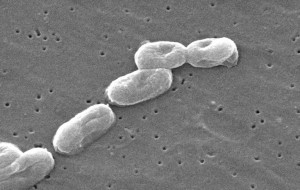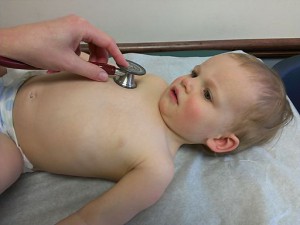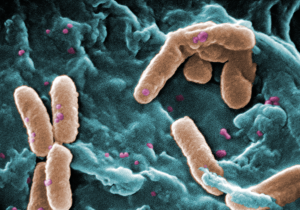 In the not-too-distant past, the medical community wasn’t overly concerned about the quality of life of adults with cystic fibrosis (CF). It’s not that doctors were callous; the life expectancy for the disease was just so low that the vast majority of CF patients never lived to see adulthood. But improved understanding and management of the disease in the past 30 years has changed that.
In the not-too-distant past, the medical community wasn’t overly concerned about the quality of life of adults with cystic fibrosis (CF). It’s not that doctors were callous; the life expectancy for the disease was just so low that the vast majority of CF patients never lived to see adulthood. But improved understanding and management of the disease in the past 30 years has changed that.
On average patients with CF are living into their late 30s, up 85 percent from the early 1980s. Today, more than 40 percent of all CF patients in America are more than 18 years old.
But data on the quality of life these patients enjoy have been seriously lacking. To fill this void, researchers from the Cystic Fibrosis Center at Boston Children’s Hospital and nine other CF centers across America conducted one of the first studies to look at quality of life for adult CF patients. Full story »

New research may change the way we culture and treat infections. (Burkholderia cepacia complex, CDC/Wikimedia Commons)
Ed. note: A longer version of this story appeared on Harvard Medical School’s website.
A boy with cystic fibrosis develops a potentially deadly Burkholderia dolosa infection in his lungs. Various genetic mutations allow some bacterial strains to survive assaults from his immune system and antibiotics, while others perish. Eventually, the strongest mutant dominates the B. dolosa colony.
Right? Maybe not, say the authors of a new study. Examining sputum samples from infected patients, they found that dozens of different kinds of B. dolosa may coexist in that boy’s lungs—each adapting and surviving in different ways. The findings, published last month in Nature Genetics, warn of possible shortfalls in the way infections are currently cultured and treated.
“We found that when a pathogen like B. dolosa infects us, it diversifies. Many cells discover ways to survive, and these successful mutants coexist,” says senior author Roy Kishony, PhD, professor of systems biology at Harvard Medical School. Full story »
 Boston Children’s Hospital convened the National Pediatric Innovation Summit + Awards 2013 with an ambitious goal: to bring together thought leaders to address the toughest challenges in pediatric health care. During the two-day summit, a series of panels and town hall discussions sparked dynamic dialogue.
Boston Children’s Hospital convened the National Pediatric Innovation Summit + Awards 2013 with an ambitious goal: to bring together thought leaders to address the toughest challenges in pediatric health care. During the two-day summit, a series of panels and town hall discussions sparked dynamic dialogue.
While the summit was designed as a forum for ongoing discussion and relationship building, five key takeaways have emerged. Full story »

(Wikimedia Commons)
Craig Gerard, MD, PhD, is chief of the Division of Respiratory Diseases at Boston Children’s Hospital.
In the 24 years since the cystic fibrosis (CF) gene was identified, the median life expectancy has risen from 25 to 39 years. Novel therapies are largely responsible for this progress, and there is hope that the pace will continue, as the first oral medications directed at correcting the gene defect have been approved by the FDA. However, it is still unclear how and when to pharmacologically treat this complicated patient population, especially during childhood.
Prior to the recent treatments developed by Vertex Pharmaceuticals, therapies for CF largely consisted of antibiotics, drugs to break up mucus secretions and chest physiotherapy. The new drugs, known as correctors and potentiators, partially “fix” the CF gene defect at the protein level, lowering the amount of chloride secreted in sweat and increasing lung function. Full story »

Bacteria like Pseudomonas aeruginosa (in brown) can move in on critically ill patients or those with cystic fibrosis. Could these bacteria hold the key to their own prevention? (CDC PHIL/Janice Haney Carr)
Putting children on a ventilator is sometimes necessary to save their lives, but it’s not without risks.
Doctors and nurses have to monitor ventilated patients carefully lest the machine over- or underinflate their lungs. Sometimes the very act of putting a child or adult on a ventilator can cause more lung damage (more on this in a future post). And life-threatening pathogens sometimes take advantage of a patient’s weakened state to set up shop in their lungs.
One of them is Pseudomonas aeruginosa, a bacterium long associated with hospital-acquired or healthcare-associated infections (sometimes also called nosocomial infections). Gregory Priebe, MD, and other researchers have spent 40 years trying to develop an effective vaccine against it.
“It’s often resistant to antibiotics, and can be very difficult to treat, even deadly,” says Priebe, a critical care specialist and infectious disease researcher at Boston Children’s Hospital. “People with cystic fibrosis (CF) also get lung infections with P. aeruginosa, where it can lead to a chronic and ultimately fatal infection.”
While there have been some limited successes in creating a vaccine, researchers have struggled to develop one that can work against multiple subtypes of the bug at the same time.
Priebe thinks he may have come up with a workaround—one that makes use of a little known arm of the immune system. Full story »

Eugenics, 1919. (Photo: A.M. Kuchling/Flickr)
As an Ashkenazi Jew planning to have a baby, I sure as heck wanted carrier screening for Tay-Sachs disease. But that disease is incurable and lethal. What about diseases that don’t severely limit lifespan and aren’t that disabling? During my pregnancy, I went on to have amniocentesis, which included testing for Down syndrome and – because of my family history — for a few genes associated with autism and mental retardation. But even as I was tested, I had no idea what I’d do if results came back positive.
Sometime soon, almost every expectant family may be faced with such life-and-death decisions. New tests are arriving that can detect Down syndrome by analyzing fetal DNA in the mother’s blood during the first trimester of pregnancy. Full story »
 In the not-too-distant past, the medical community wasn’t overly concerned about the quality of life of adults with cystic fibrosis (CF). It’s not that doctors were callous; the life expectancy for the disease was just so low that the vast majority of CF patients never lived to see adulthood. But improved understanding and management of the disease in the past 30 years has changed that.
In the not-too-distant past, the medical community wasn’t overly concerned about the quality of life of adults with cystic fibrosis (CF). It’s not that doctors were callous; the life expectancy for the disease was just so low that the vast majority of CF patients never lived to see adulthood. But improved understanding and management of the disease in the past 30 years has changed that.











